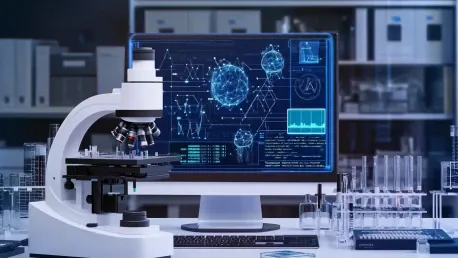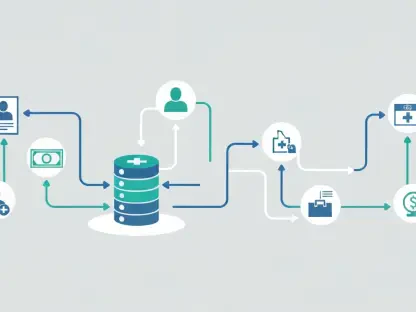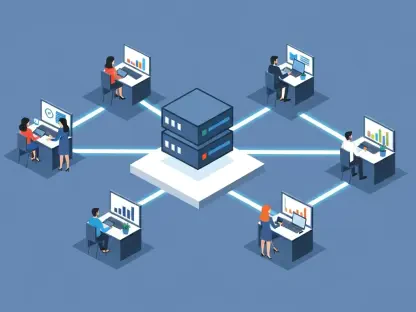Lab automation is experiencing transformative growth driven by technological advancements, increased demand for precision, and the need for enhanced efficiency in laboratory operations. With a market valued at USD 5.3 billion in 2022, it is projected to reach USD 8.97 billion by 2030, growing at a CAGR of 6.8% between 2023 and 2030. This growth is fueled by the increasing complexity of research and development, the demand for high-throughput testing, and the integration of automation across various industries, including pharmaceuticals, healthcare, biotechnology, food safety, and environmental testing. The COVID-19 pandemic has significantly accelerated the adoption of automated systems, particularly in diagnostics and clinical laboratories.
Lab automation involves the use of automated equipment and systems to execute laboratory tasks such as sample preparation, testing, and data analysis. By minimizing manual labor, increasing throughput, and improving accuracy, automation solutions aim to enhance laboratory efficiency. This report uncovers the latest trends, growth opportunities, and strategic analyses that define the lab automation market.
Product Types in Lab Automation
Lab automation products span a variety of instruments and systems designed for different tasks within lab environments. Liquid handling systems, for instance, automate repetitive tasks like pipetting, reagent dispensing, and sample dilution, markedly improving speed and accuracy. Automated analyzers, heavily utilized in diagnostic labs, conduct chemical, biological, and immunological assays with minimal human intervention, streamlining workflow and increasing test throughput.
Robotic systems automate complex processes such as high-throughput screening, sample transport, and laboratory inventory management. These solutions reduce the need for manual handling, thereby minimizing errors and enhancing productivity. Microplate readers are designed to automate the reading and analysis of microplates used in biological research, particularly in assays and screening applications, offering consistent and reliable results.
Integration software solutions streamline workflows, manage data storage and analysis, and enable remote control and monitoring of lab processes, providing a centralized approach for managing laboratory automation. Storage and retrieval systems automate the management of vast quantities of biological samples, ensuring accurate cataloging and reducing human error. These products collectively contribute to improved laboratory efficiency, reduced human errors, and quicker and more accurate test results.
Key Market Trends (2024-2035)
The lab automation market is continuously evolving with several key trends shaping how laboratories operate and how automation systems are developed and implemented. One of the major trends is the integration of artificial intelligence (AI), machine learning (ML), and big data analytics into lab automation. AI and ML algorithms can analyze large amounts of experimental data, detect patterns, and provide predictive insights, substantially enhancing laboratory efficiency and decision-making capabilities. The incorporation of IoT (Internet of Things) in laboratory automation allows devices to communicate and exchange data, enabling real-time monitoring and remote management which optimizes workflows and reduces manual intervention.
Another significant trend is the demand for miniaturization and high-throughput screening. Miniaturized devices facilitate high-throughput screening of samples in smaller volumes, which cuts costs, improves sample throughput, and saves time. This trend is driving the industry towards compact, high-performance automation systems capable of handling a larger volume of tests with heightened precision. Similarly, cloud technology plays a crucial role in lab automation, providing the ability to store, share, and analyze large volumes of data generated during lab processes. Cloud-based systems enable improved collaboration among researchers, real-time access to results, and quicker data-driven decision-making. This is particularly important as the rise of big data places a greater emphasis on data management, where AI-powered analytics help handle larger datasets and provide insights to optimize experimental design and interpret results.
Sustainability is also becoming a significant focus in lab automation. Energy-efficient, waste-reducing, and eco-friendly automation solutions are being designed as laboratories strive to reduce their environmental impact. Green technologies, such as energy-efficient lab equipment and sustainable practices, are gaining prominence. Additionally, there is a movement towards minimizing the use of chemicals, solvents, and reagents in automated processes, which not only benefits the environment but also reduces operational costs.
The COVID-19 pandemic has accelerated the adoption of automation in diagnostics, especially in clinical labs. The need for high-throughput testing, such as PCR and antibody testing, highlighted the importance of automated systems in ensuring rapid processing times, accuracy, and scalability. Post-pandemic, there’s a growing focus on point-of-care testing (POCT), where lab automation is critical for enabling rapid diagnostics, reducing patient wait times, and lowering healthcare costs.
Competitive Landscape
The lab automation market is highly competitive, with numerous players offering a wide range of solutions tailored to different laboratory needs. These companies are focused on innovation, strategic collaborations, and expansion to maintain and enhance their market positions. For instance, Thermo Fisher Scientific is known for its comprehensive range of automated laboratory equipment, including liquid handling systems, automated analyzers, and data management software solutions. Abbott Laboratories is renowned for high-performance diagnostic and lab automation systems, particularly in clinical testing.
Beckman Coulter, a part of Danaher Corporation, is a major provider of automated laboratory solutions, particularly in clinical chemistry, immunoassays, and hematology. Siemens Healthineers offers a broad array of lab automation products, from laboratory analyzers to software solutions that enhance laboratory workflows and decision-making. Agilent Technologies is prominent in sectors such as genomics, diagnostics, and life sciences research, known for its laboratory instruments and automation systems.
These companies are heavily investing in R&D to develop advanced products and expand their market presence. Collaborations with research institutions, healthcare providers, and technology firms are common strategies to drive innovation and maintain competitive advantages. As these key players continue to push the boundaries of lab automation, they are setting the stage for a more efficient and accurate future in laboratory operations.
Product and Service Analysis
The lab automation market is segmented into various product categories, each offering specific capabilities to meet growing laboratory requirements. Liquid handling systems are indispensable in laboratories for tasks like liquid dispensing, sample transfer, and reagent preparation. Automation in these tasks enhances consistency, reduces human error, and increases throughput, making them crucial in both clinical and research settings. Automated analyzers are essential in clinical diagnostics, performing complex assays and testing biological samples like blood and urine with high accuracy and speed. Their adoption continues to rise across hospitals, clinics, and diagnostic labs, meeting the need for faster, more accurate results.
Robotic systems also play a significant role in modern laboratories, performing complex tasks such as sample sorting, robotic liquid handling, and assembly line functions. Their utilization spans various applications, including pharmaceutical research and diagnostic labs, driven by the integration of AI and robotics. Software solutions are equally critical, providing integration software to manage automated devices within a laboratory. These solutions offer a central interface for instrument control, data management, and analysis. The trend towards cloud-based software solutions supports easier access, improved collaboration, and better data management.
Market Segmentation
The lab automation market is segmented by application, end-user, and region. By application, the market includes pharmaceuticals and biotechnology, clinical diagnostics, food and beverage testing, and environmental testing. Laboratories in the pharmaceutical and biotechnology industries adopt automation to streamline drug discovery, development, and testing processes. In clinical diagnostics, lab automation is crucial for high-throughput testing for disease detection and monitoring. Food and beverage testing utilizes automation for quality control, food safety testing, and ensuring compliance with regulatory standards. Environmental testing labs use automation to monitor air, water, and soil quality and comply with regulations.
By end-user, the market encompasses hospitals and diagnostic laboratories, research institutions, and pharmaceutical companies. Hospitals and diagnostic laboratories are the largest users of lab automation systems due to their reliance on high-volume, efficient testing for accurate and timely results. Research institutions, both academic and private, increasingly adopt automation for molecular biology research, drug discovery, and clinical trials. Pharmaceutical companies utilize lab automation for drug testing, analysis, and development to achieve faster and more accurate research outcomes.
By region, the lab automation market sees significant growth in North America, Europe, and Asia-Pacific. North America dominates the market, with a high concentration of healthcare facilities and research institutions that adopt these technologies. Europe sees growing demand for lab automation in countries like Germany, France, and the UK, bolstered by significant investments in diagnostic and research automation. The Asia-Pacific region is the fastest-growing market, driven by improvements in healthcare infrastructure and increased research initiatives in countries like China, Japan, and India.
Pricing Trends
The cost of lab automation systems varies widely based on the complexity and level of automation required. Initially, large-scale systems like robotic sample handling and automated analyzers were high-priced, limiting their adoption to significant research institutions and healthcare facilities. However, technological advancements and modular, scalable systems are making automation more affordable for smaller laboratories. The rise of cloud-based and open-source software solutions is expected to further reduce costs and broaden access to these tools.
Recent Developments
Several key innovations are driving the lab automation market. AI integration is becoming increasingly prevalent, with algorithms enhancing decision-making, process optimization, and data analysis. Miniaturization is another significant development, enabling the creation of smaller, more efficient devices that can handle high-throughput with superior precision. Advanced robotics and automation systems are also being increasingly applied for tasks like sample analysis, transport, and storage, boosting laboratory productivity and workflow efficiency.
Sustainability and Environmental Impact
Manufacturers are focusing on developing eco-friendly lab automation systems to promote sustainability in laboratory operations. Energy-efficient designs, reduction of waste, and decreased carbon footprints are primary considerations. Regulatory changes further encourage sustainable practices in labs, such as reducing hazardous chemical usage and optimizing energy consumption. These efforts are not only about compliance but also about creating more efficient and cost-effective operational processes that benefit both the environment and the bottom line.
Conclusion and Future Outlook
The lab automation market is evolving with key trends shaping operations and system developments. One major trend is integrating artificial intelligence (AI), machine learning (ML), and big data analytics. AI and ML algorithms can process vast amounts of experimental data, identify patterns, and provide predictive insights, enhancing lab efficiency and decision-making. The integration of IoT (Internet of Things) enables devices to communicate and exchange data, allowing real-time monitoring and remote management, which optimizes workflows and reduces manual intervention.
Another significant trend is the demand for miniaturization and high-throughput screening. Miniaturized devices allow high-throughput screening in smaller volumes, lowering costs, enhancing sample throughput, and saving time. This drives the industry toward compact, high-performance automation systems that handle larger test volumes with increased precision. Cloud technology is also crucial, enabling data storage, sharing, and analysis. Cloud-based systems improve collaboration, provide real-time access to results, and support faster data-driven decision-making.
Sustainability is gaining focus in lab automation. Energy-efficient, waste-reducing, and eco-friendly solutions are being developed as labs aim to lessen their environmental impact. Green technologies, like energy-efficient equipment and sustainable practices, are becoming prominent. Additionally, minimizing the use of chemicals, solvents, and reagents benefits both the environment and operational costs.
The COVID-19 pandemic has accelerated the adoption of automation in diagnostics, especially in clinical labs. The need for high-throughput testing, such as PCR and antibody testing, underscored the importance of automated systems for rapid processing, accuracy, and scalability. Post-pandemic, there is a growing focus on point-of-care testing (POCT), where lab automation enables rapid diagnostics, reduces patient wait times, and lowers healthcare costs.









